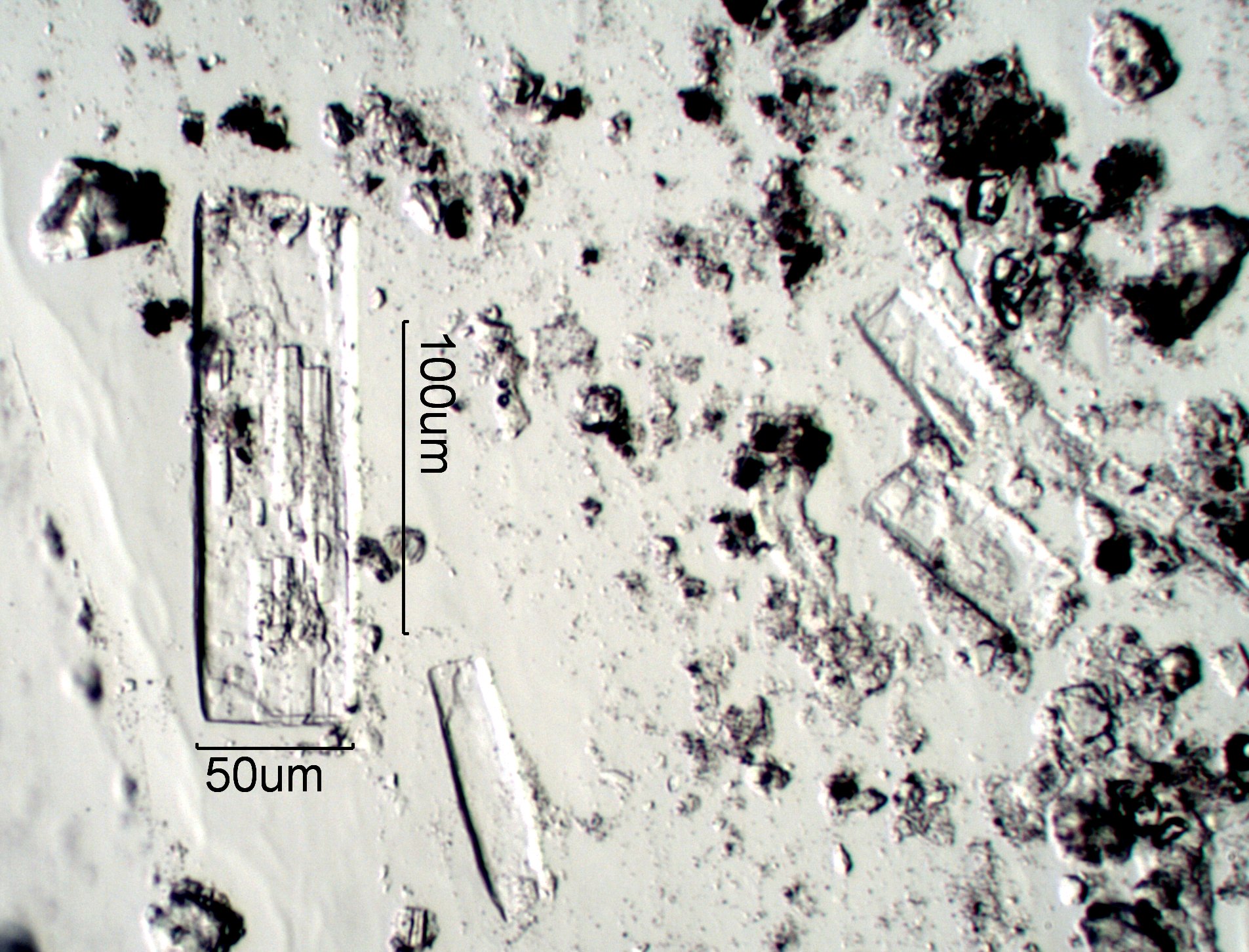Urea Crystals
A yellow stain near the molding on a bathroom floor wassuspected to be fungal growth. This is from an environmental tapelift of the stain. The large crystals seen here are urea. In this case the oblique illumination indicates that the refractive index perpedicular to the long axis of the crystal is much higher than 1.480. The relief is high and the crystal is bright on the right side. This is the epsilon refractive index.
Transmitted Oblique Single Linear Polarized Light Oriented Perpedicular to the Long Axis
Definition/Function:
Urea is CO(NH2)2. It is excreted by mammals in the urine as a breakdown product of protein.
Significance in the Environment:
Urea is a common marker for urine stains in indoor environments. Pet related stains on floors or rodent paths are common locations associated with urea from mammalian urine.
Characteristic Features:
Urea is a colorless, optically positive, tetragonal crystal with refractive indices of 1.484 (omega) and 1.602 (epsilon).
Associated Particles:
When part of a deposit from urine it is associated with sodium chloride and other organic and inorganic salts.


